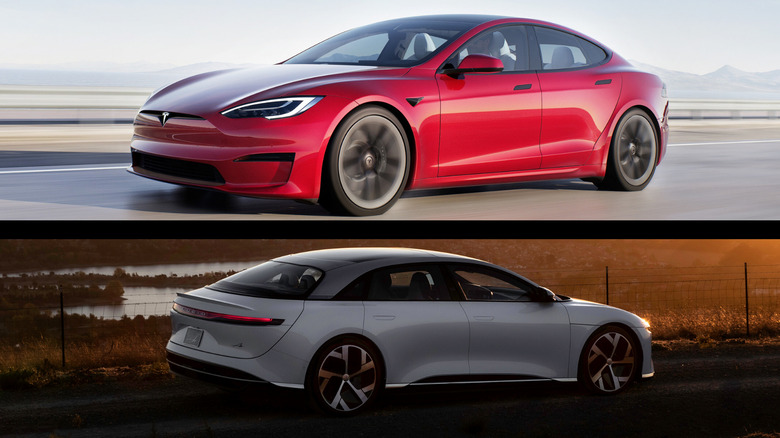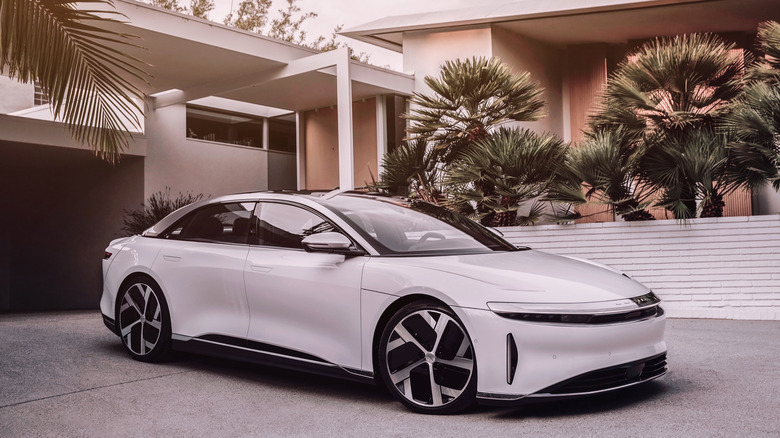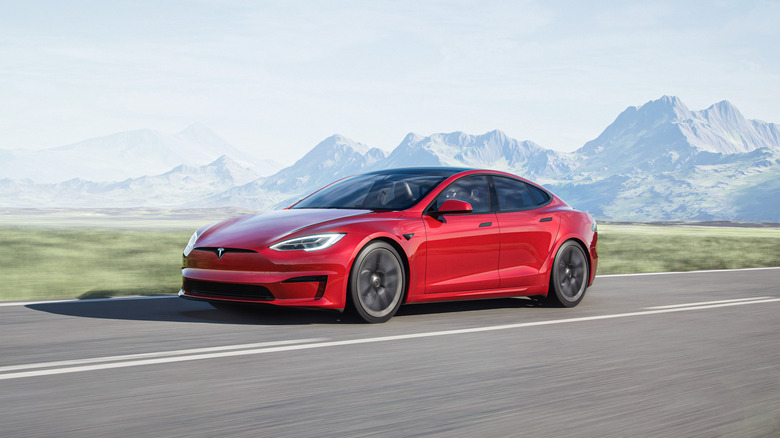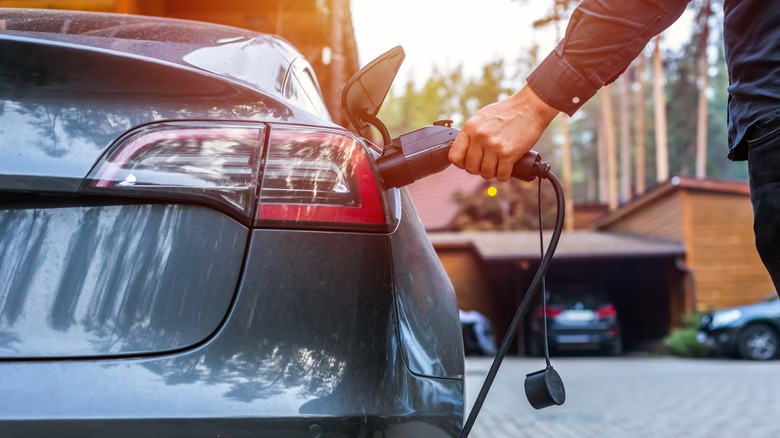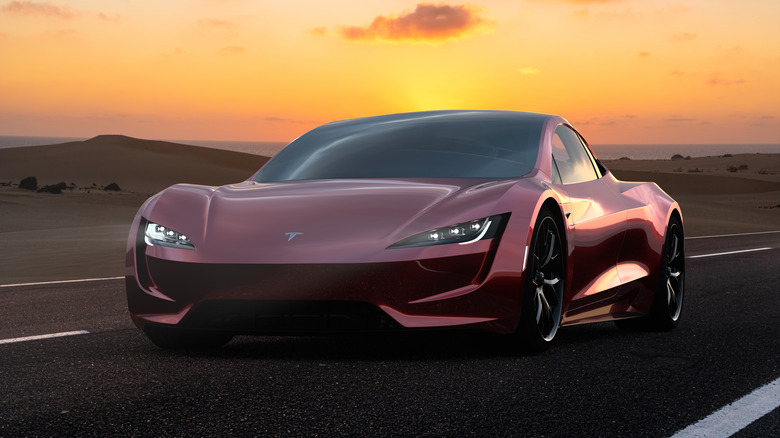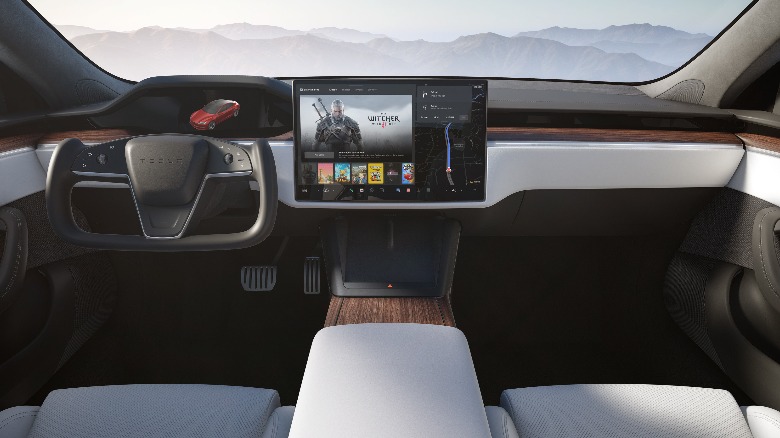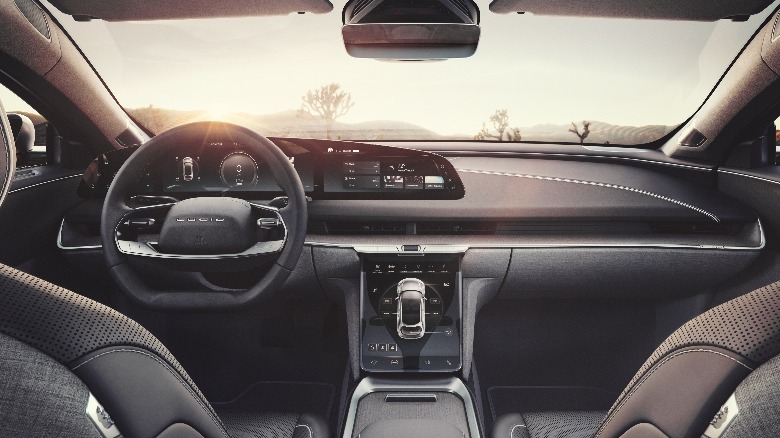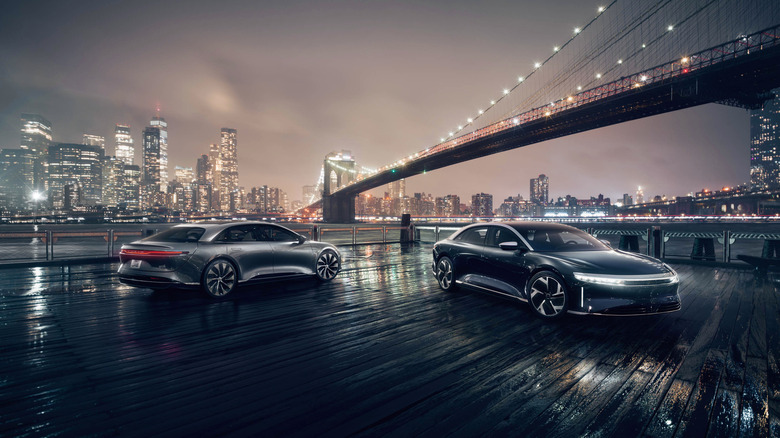Lucid Air Vs Tesla Model S: Which Is The Better Electric Car?
Really, there are two big names that dominate EV headlines: Tesla and Lucid Motors. This is primarily because these are the two EV companies that have been able to make a lasting impression on the public — and a physical one. Both Tesla and Lucid have showrooms in various parts of the United States and across the globe where anyone can see how the vehicles look like in person, and even take a seat in one. Very few electric-native automakers have been able to make it past the online hype phase, yet Tesla and Lucid Motors are among the rare exceptions.
Many of you have probably looked at these two automakers and wondered: Which is the best? Furthermore, some of you may even be wondering which is the right buy. Initially, it's a tricky decision. After all, both companies started in California, and both set out to produce fully-electric cars from the get-go. However, that is right about where the similarities end and the differences begin.
The background on Lucid Motors
Lucid Motors started life as, well, not Lucid Motors. In 2007, a trio of entrepreneurs founded a company called Atieva (via Elektrek). The California-based company focused on improving battery reliability, durability, and performance — but for other companies rather than themselves. Its early technologies reached modes of transportation like buses, motorcycles, and vans.
However, 2016 saw a shift in the company's motives. Not only had it changed its name to Lucid Motors, but they also changed its focus to building an electric car that wasn't just impressive as an electric car — they wanted to build an impressive car. And so, they gave it 1,111 horsepower, among other things. Today, Lucid Motors has only one car on sale, the Lucid Air, which comes in four trims: Pure, Touring, Grand Touring, and Dream Edition, in order from cheapest to most expensive. However, Lucid Motors does have Project Gravity underway, which is slated to be an SUV that'll debut in 2024.
The background on Tesla
On the other hand, Tesla actually started off with the name Tesla Motors in honor of Nikola Tesla, who's revered for his work in electric currents. Tesla was founded by a group of engineers with sites set on producing an electric car that defied the expectations of an all-electric vehicle. Considering that this was during 2003, it was a radical undertaking.
But five years later, Tesla unleashed the Tesla Roadster, which captured the public's attention. It was a sports coupe that boasted a chassis borrowed from the Lotus Elise, and fully electric power. From there on out, Tesla's potential and popularity exploded exponentially — partly because of its now mainstream cars, and partly because of its new radical leader, Elon Musk. Today, Tesla sells four different cars: the Model S, the Model 3, the Model X, and the Model Y (which comedically spells S3XY, if you didn't already know).
Range
When looking for the better option in EVs, the first obvious check people make is range. For the sake of this comparison, we'll compare a base-model Tesla Model S to a base-model Lucid Air, and we'll do the same for their highest trim models.
The entry-level Tesla Model S has 375 miles of range, while the best-possible range for a Model S is 405 miles. As for the Lucid Air, the entry-level Lucid Air Pure gets 406 miles of range, while the best possible range for the Lucid Air is a whopping 520 miles. If you haven't noticed already, the range of the base Lucid Air is essentially the same as the highest range-capable Model S. Coincidence? We think not. So then, it's advantage Lucid Air in the range department.
In terms of charging time, Tesla says owners only have to wait 15 minutes to get 200 miles of range. However, Lucid Motors says its car takes 20 minutes to get 300 miles of range. Just like it's advantage Lucid Air in the range department, the same thing can be said in the charge-time department.
Performance
Having a "base" model for either a Model S or a Lucid Air doesn't mean you're only getting batteries on wheels. The cheapest-possible Tesla Model S still gets you 670 horsepower and a 0-60 time of 3.1 seconds, which beats out the Lucid Air Pure, which comes standard with 480 horsepower and a 0-60 time of four seconds (via EVCompare). It is quite literally the only 0-60 time Lucid Motors doesn't supply itself (Lucid showcases all the other trims' times). With that aside, those figures are impressive for any car — let alone the base models.
However, things get interesting when looking at their top-of-the-line models. Tesla's Model S Plaid, the most expensive Model S, serves up 1,020 horsepower and goes from 0-60 in 1.99 seconds, making it the quickest car on the market to do the 0-60 sprint. Lucid Motor's top trim model for the Lucid Air is dubbed the Dream Edition. It comes with 1,111 horsepower and goes from 0-60 in 2.5 seconds. So while the Lucid Air Dream Edition has more horsepower than the Tesla Model S Plaid, it still does the 0-60 sprint 0.6 seconds slower, therefore giving Tesla the upper hand for off-the-line performance.
Looks: Interior and exterior
While the Tesla Model S is an embodiment of a futuristic interior, the Lucid Air is more reminiscent of a typical interior of a car today. Take the steering wheel, for example. The Lucid Air has a regular steering wheel — fully enclosed, and mostly circular in shape. The Model S photo showcased above, however, has a "yolk" steering wheel, which isn't exactly what you would find in your dad's sedan (note: it is possible to get a regular steering wheel in a Model S). Then again, you likely wouldn't expect the CEO of any car company to also own a social media platform and a rocket company, but that's exactly what Tesla's CEO does.
Both cars share a lot of screen real estate, with both the Model S and the Air replacing nearly all their physical buttons with touchscreens.
In terms of interior quality and materials, the Lucid Air is seemingly better. It features a host of different fabrics, leathers, metals, and of course, plastic to create different "moods" in the Lucid Air. Tesla, meanwhile, does have some wood trim and different leather options, but it's not as diverse and bright as the Lucid Air.
As for their exteriors, both keep a smooth, flowing design to help minimize drag, which increases range. However, the Model S looks more aggressive in most trim levels than the more professional-appearing Lucid Air.
The final conclusion
The overarching favorite was always going to be Tesla. Besides, they are the biggest car company in terms of value, and they sell the most EVs out of every company on the market. However...
We think the Lucid Air trumps the Model S, and we think that for a few reasons. The first of which is that the Lucid Air looks better on paper, in most cases. It's cheaper to buy a Lucid Air, and you can go further on a single charge while you're in one. The Model S does have the Lucid Air beat when it comes to top speed and 0-60 times, but most people won't be exploring the ludicrous capabilities of both cars — especially not on a daily basis. More importantly than the stuff on paper, though, is livability, and the Lucid Air provides a better interior, and a more familiar layout in its interior, all the way down to the steering wheel.
However, the deciding factor on EVs nowadays has been range. Range has been what determines if a car is competent or rubbish to the general public, and it's hard to ignore the Lucid Air's superiority in the range department The Lucid Air wallops the Tesla Model S in the range department by over 100 miles when comparing the best possible ranges for each car. And those 100 miles go a long way for consumers — us included.
